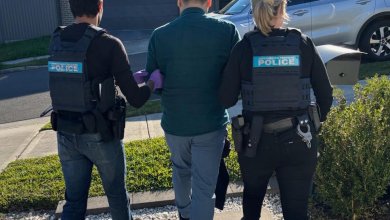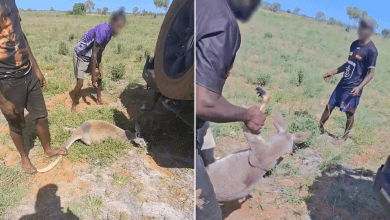Skull Returns Home: 19th-Century Aboriginal Remains Repatriated from UK to Tasmania
A Tasmanian Aboriginal man's skull, taken during the colonial era and held by the University of Aberdeen, has been repatriated for ceremonial burial. Experts say it reflects a global shift in decolonising museum collections.

“No Jaw, No Justice” — A Skull’s 200-Year Journey from Colonisation to Closure
In a tale as grim as it is overdue, the University of Aberdeen in Scotland has finally returned the skull of a young Aboriginal man, taken during the violent colonisation of Tasmania in the 1800s, to the Tasmanian Aboriginal Centre. The man, a member of the now-extinct Big River Nation, was believed to have been shot near the Shannon River before his head was souvenired like a grisly trophy and shipped off to Britain — because apparently nothing says “science” like grave robbery.
Now, he’ll be laid to rest in a ceremony worthy of his cultural dignity, instead of being propped up on a colonial anatomy bench.
The Repatriation Stats That Matter
| Detail | Information |
|---|---|
| Remains Returned | Skull (missing lower jaw) |
| Returned From | University of Aberdeen, Scotland |
| Returned To | Tasmanian Aboriginal Centre |
| Original Origin | Big River Nation, Tasmania |
| Estimated Time of Death | 1820s–1830s |
| Cause of Death | Shot by colonisers near Shannon River |
| Method of Collection | Post-mortem decapitation; part of colonial body trade |
| First Contact by University | 2019 |
| Repatriation Approved | 2020 |
| Date of Burial | Friday, May 3, 2024 |
| Known Previous Use | Medical teaching (1850s–early 2000s) |
From Trophy to Teaching Tool: How Did the Skull End Up in Aberdeen?
The skull was originally part of a collection curated by William MacGillivray, a 19th-century professor at Marischal College (now part of Aberdeen University). MacGillivray’s death in 1852 led to the university acquiring the collection, including the “Van Diemen’s Land native” skull, described as having been “shot on the Shannon River”.
The lower jaw was missing — but not the colonial arrogance.
The university housed the remains in its comparative anatomy section before shifting them to a cultural collection in the 2000s — because nothing says “cultural sensitivity” like a stolen skull on a shelf.
“Murder by Musket, Followed by Lecture Notes”
Andry Sculthorpe of the Tasmanian Aboriginal Centre didn’t mince words:
“This is a record of racist attitudes to the study of humanity… in this case, murder.”
He noted that for the Big River tribe — completely wiped out during colonisation — every return like this is a spiritual restoration, a way of mending centuries of desecration.
Why It Matters (And Not Just to Historians)
- Colonial Legacy Exposed: The case underlines the grotesque trade in Aboriginal body parts that formed part of “scientific” practices of the day.
- Repatriation Momentum: Follows global moves, including Germany’s return of Aboriginal remains and Aberdeen’s return of a Benin Bronze to Nigeria in 2021.
- Cultural Healing: For First Nations people, these returns are not symbolic — they are sacred obligations to ancestors.
Neil Curtis, the university’s museum head, said the return was about “acknowledging violence and racism” — a rare move from a Western institution known more for hoarding than healing.
International Repatriations: A Growing Movement
| Country | Notable Repatriations |
|---|---|
| UK | Aboriginal remains, Benin Bronzes, Maori tattooed heads |
| Germany | 100+ Aboriginal ancestors returned in 2024 |
| France | Skull of Algerian resistance fighter returned in 2020 |
| US | Native American bones returned from universities/museums |
A Nation Speaks: “Let Him Rest”
The burial, taking place in Tasmania, will mark a return not just of bones, but of belonging.
“This young man’s murder will not be forgotten. We will bring him home to rest at last.”
— Tasmanian Aboriginal Centre
Final thought: It’s 2024, and a stolen skull is finally getting the homecoming it should have received 200 years ago. Sometimes, justice takes centuries. But as the old Aussie saying goes: better late than embalmed.




